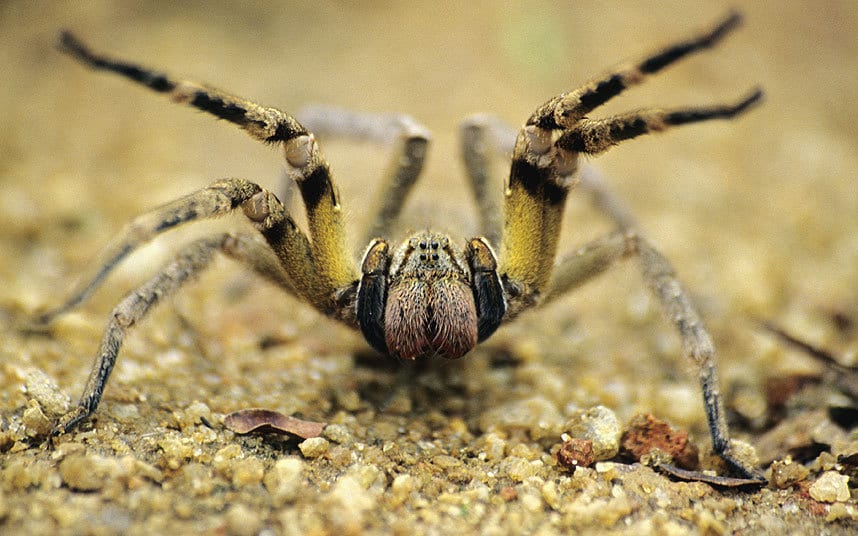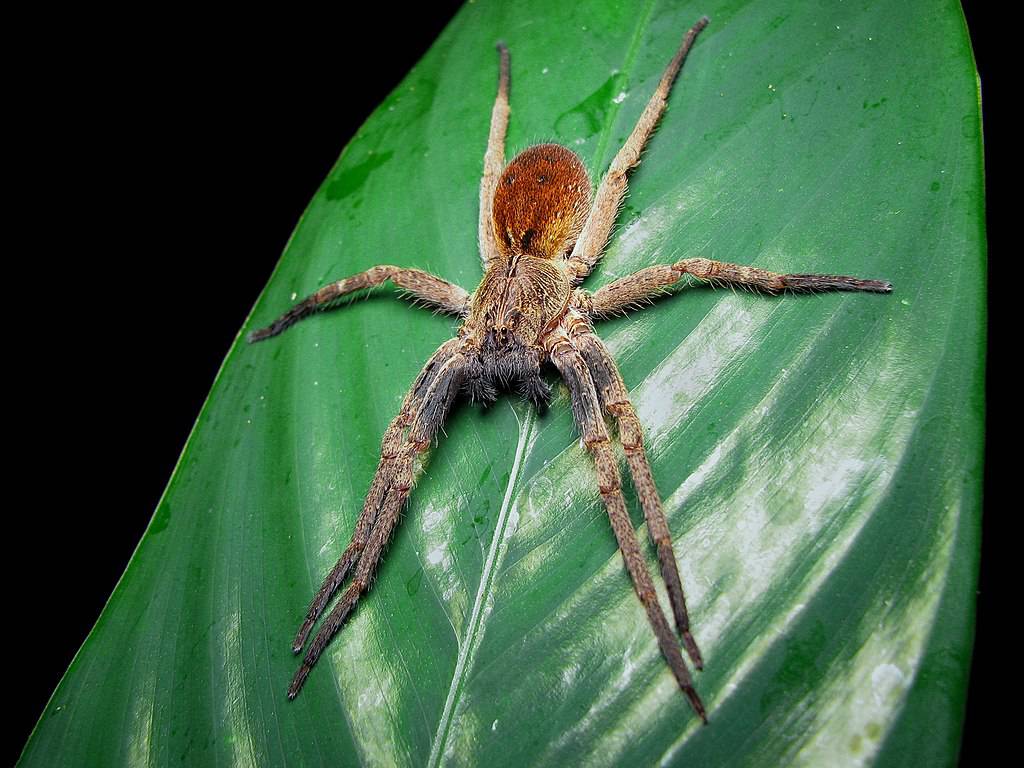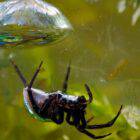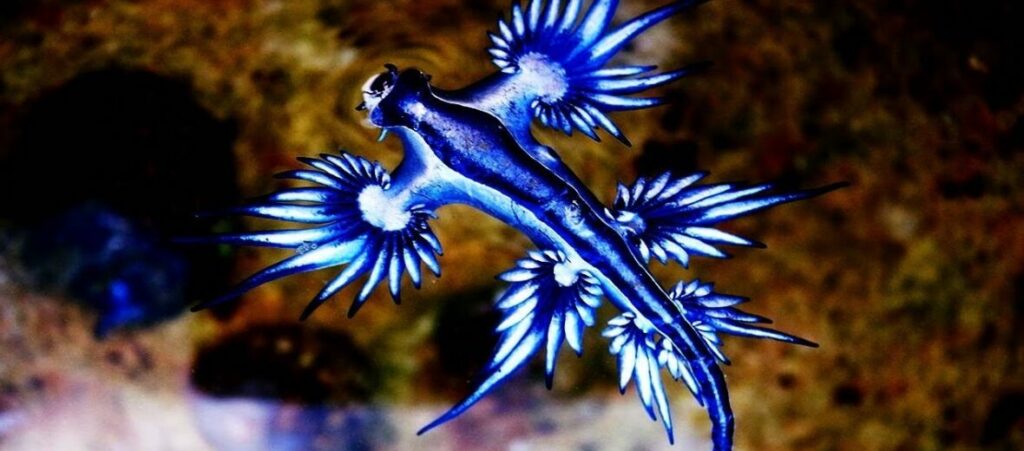Why are Brazilian Wandering Spiders so feared?

The Brazilian Wandering Spider, known scientifically as Phoneutria, evokes a sense of dread and fascination due to its notorious reputation as one of the most venomous and feared spiders in the world. This arachnid, primarily found in South and Central America, has garnered attention and fear due to its potent venom and distinct behaviors, shaping its fearsome reputation.
These spiders are nocturnal hunters, primarily active during the night. They seek prey by wandering and hunting, using their strong sensory abilities to locate insects, small vertebrates, and other spiders, upon which they prey.
Unlike other spiders that build webs to capture prey, these spiders use their agility and speed to chase and capture their food. Their excellent vision and hunting capabilities make them efficient predators, seizing their prey with speed and precision.
Potent Venom: The Source of Fear
One of the primary reasons for the fear associated with Brazilian Wandering Spiders lies in their venom. The venom of these spiders contains neurotoxins, notably robustoxin and phTx3, which affect the nervous system and can potentially cause severe symptoms in humans if bitten.
Scientific research has examined the venom’s effects, which can lead to intense pain, muscle spasms, and in severe cases, paralysis or even death if medical treatment is not sought promptly.
Toxicity of Robustoxin
Robustoxin, the venom component found in wandering spiders, is a potent neurotoxin responsible for severe envenomations in humans and other animals. The toxicity of robustoxin is notably influenced by the sex of the spider, with male spiders producing venom that is approximately six times more powerful than that of females.
In laboratory studies using mice, the LD50 (lethal dose required to kill 50% of the test population) for venom from male spiders was found to be 3.3 mg/kg body weight, while for female spiders it was 50 mg/kg body weight. When purified delta atracotoxin isolated from male spiders was tested, an LD50 value of 0.15 mg/kg body weight was determined, highlighting the extreme potency of this neurotoxin.
Effect on Animals and Humans
The effects of robustoxin are primarily attributed to delta atracotoxin, a component of the spider’s venom. Delta atracotoxin acts by inducing spontaneous and repetitive firing of nerve cells, leading to continuous release neurotransmitter from both somatic and autonomic nerve endings. This results in altered sodium channel function, including slower inactivation and a shift in voltage-dependence, ultimately affecting nerve signaling and muscle function.
Interestingly, different animal species exhibit varying sensitivities to spider venom. For example, rats, rabbits, and cats are largely unaffected by the bite of a female funnel-web spider, while 20% of mice and guinea pigs may succumb to the venom. In contrast, bites from male spiders are highly lethal to mice and guinea pigs, with nearly all individuals affected.
Primates, including humans, are particularly sensitive to the effects of the venom. Records dating back to 1927 document numerous envenomations in humans, with 14 reported deaths before the availability of antivenom. The symptoms of funnel-web spider bites in humans can be severe, including respiratory distress, muscle spasms, and cardiovascular complications, highlighting the dangerous nature of robustoxin and its associated toxins.
Aggressive Behavior and Wandering Nature
Another reason for the fear surrounding these spiders is their aggressive behavior and propensity to wander. Brazilian Wandering Spiders are aptly named for their wandering nature, as they do not create webs but roam the forest floor in search of prey. Their unpredictable movements and tendency to hide in dark, undisturbed areas contribute to the unease felt by many.
When threatened or cornered, Brazilian Wandering Spiders can display defensive and aggressive behavior. They might rear up on their hind legs, exposing their fangs and warning potential threats with this intimidating posture. Their propensity to defend themselves can lead to bites if they perceive a threat, though they generally prefer to retreat and avoid conflict.
Urban Encounters and Urban Legends
When not actively hunting or roaming, Brazilian Wandering Spiders seek shelter in dark, undisturbed areas such as burrows, leaf litter, or other natural hiding spots. Their preference for concealed locations contributes to the difficulty of encountering them in the wild.
Instances of Brazilian Wandering Spiders being inadvertently transported in shipments of fruits, causing accidental encounters in urban areas, have added to the mystique and fear. Reports and urban legends about encounters in urban settings, such as in banana shipments or homes, have further perpetuated the fear surrounding these spiders.
Priapism
When a person is bitten by a wandering spider containing Tx2-6 toxin, the venom can disrupt the normal neurotransmitter balance, leading to an excessive release of nitric oxide. This uncontrolled vasodilation can result in a persistent and painful erection that does not subside naturally, a condition known as priapism.
Priapism caused by wandering spider bites is a medical emergency that requires prompt attention. If left untreated, prolonged erection can lead to tissue damage, scarring, and even permanent erectile dysfunction. Medical interventions may include administering antivenom to counteract the effects of the spider venom, as well as medications to manage the erection and alleviate pain.
It’s essential for individuals who suspect they have been bitten by a wandering spider and are experiencing priapism or other concerning symptoms to seek immediate medical help. Timely intervention can prevent complications and ensure appropriate treatment to resolve the priapism and address any other effects of the spider venom on the body.

Media Attention and Sensationalism
The sensationalist portrayal of Brazilian Wandering Spiders in media, including documentaries and news reports, often highlights their venomous nature and potential dangers, contributing to the fear and public perception of these arachnids.
While the fear of these spiders is well-founded due to their venomous bites, it’s important to recognize the exaggerated and sometimes sensationalized portrayal of their threat. Understanding their behavior, habitat, and the rarity of human encounters can help dispel misconceptions and foster a more balanced perception of these creatures.
Respecting the Nature of Brazilian Wandering Spiders
The fear surrounding Brazilian Wandering Spiders is rooted in their potent venom, aggressive behavior, and occasional urban encounters. While their venomous nature should be respected, it’s important to acknowledge the rarity of encounters and understand their vital role in ecosystems. Educating the public on safety measures and dispelling myths through scientific knowledge contributes to a more informed and balanced perception of these remarkable creatures.










